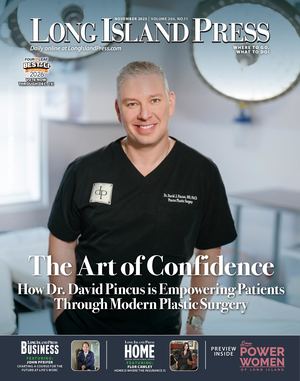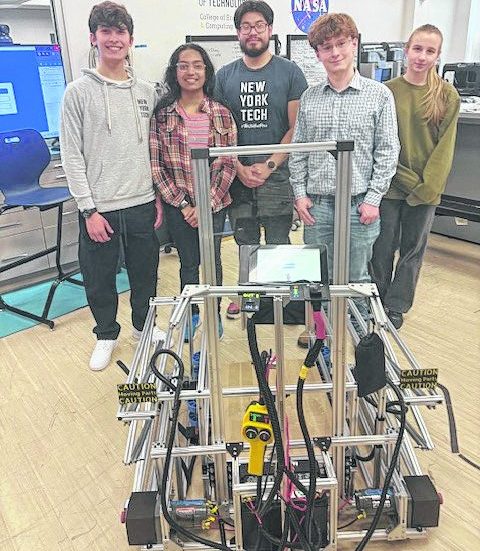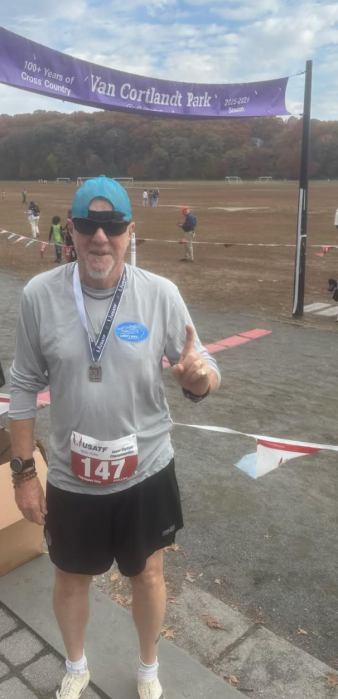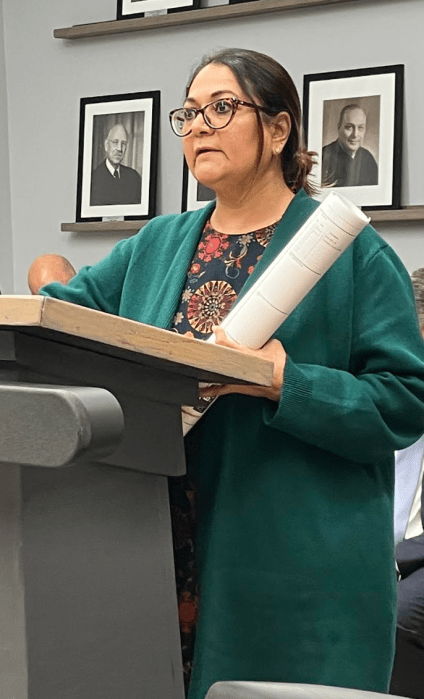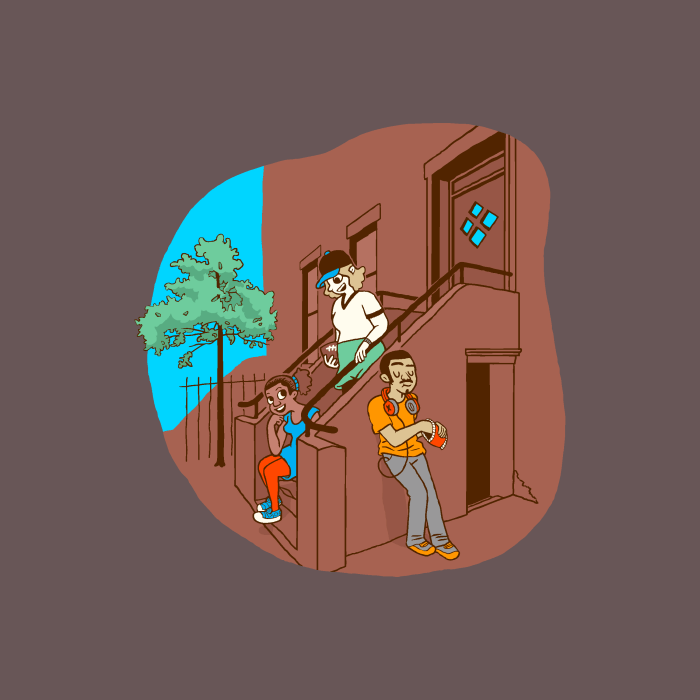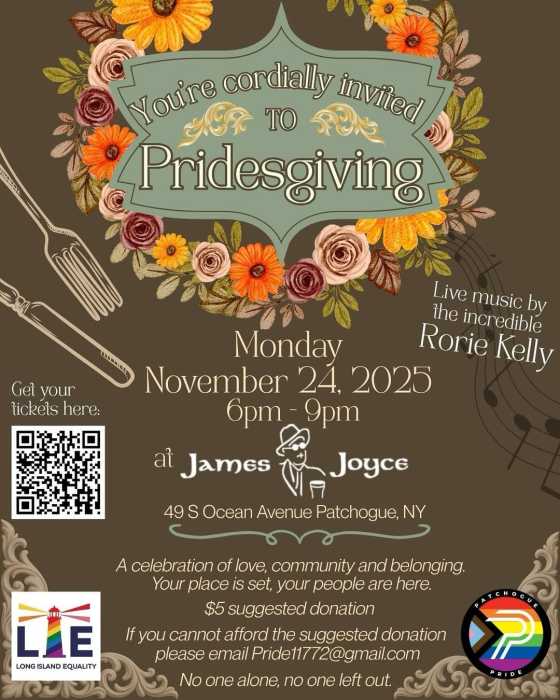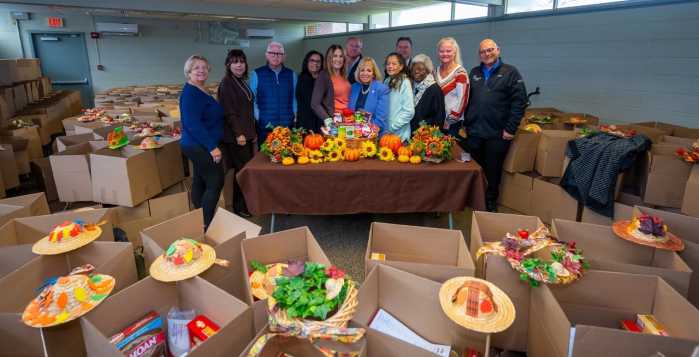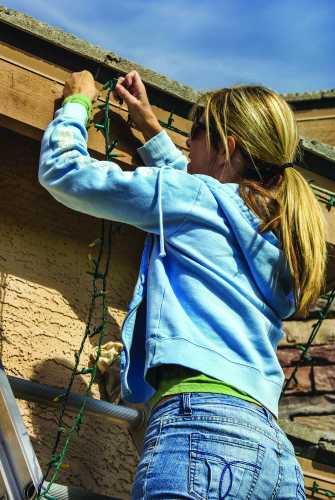In a cramped laboratory room on the sprawling campus of New York Institute of Technology (NYIT) in Old Westbury, two groups of students are hard at work on projects that have kept them busy for the past year.
But this is no ordinary lab. These projects are not for the purpose of grades or regular class-work. The students hope their work will benefit people in the workplace who deal with autism or other challenges.
One team of four students is working on an automatic mixer to help workers with autism at Spectrum Designs, a clothing and apparel screen printing company, in Port Washington.
The other group, of five students, are working on a device called T.R.A.M, (Transport Ready Assisting Machine), about the size of a small shopping cart, to help workers at AHRC who must lift heavy packages.
“A lot of people at AHRC can’t lift packages,” said Joanna Sroka, 21, of Deer Park, who has graduated from NYIT but remains committed to working on the T.R.A.M project. “This helps them safely check lists and move packages.”
Both teams presented their projects on April 9 at the CREATE (Cultivating Resources for Employment with Assistive Technology) symposium in Albany. The forum is sponsored by the New York State Industries for the Disabled. The two NYIT student groups worked in partnership with Spectrum Designs and AHRC.
Read more: Young Tech Entrepreneurs Are Getting Their Start At NYIT
Michael Nizich, adjunct associate professor at NYIT and director of the school’s Entrepreneurship and Technology Innovation Center, told the Press that each group was required to discuss with Spectrum Design and AHRC officials what would best suit workers’ needs.
The students then met and discussed ways they might meet those needs.
“Spectrum and AHRC were looking for technological solutions,” Nizich told the Press.
He said the ultimate goal of the projects is that the designs end up being used in the workplace.
Russell Wetzler, 19, of Bethpage, also working on the T.R.A.M, said he works part time as a technician at Home Depot.
“I’m surrounded by machines,” he told the Press. “All that had an influence on this project.”
Said Sroka, “We took two weeks to decide what to do.”
They brainstormed and came up with a battery-powered contraption that can move its parts with a push of a button and carry about packages.
“We discussed things as a team,” said Wetzler. “We brought sketches and notes to present our ideas.”
Alana Singh, 20, of Richmond Hills, Queens, also a T.R.A.M team member, said “We wanted to create something completely safe.”
The NYIT team that developed the mixer for Spectrum, officially called a BlendBot Ink Mixer, were looking for a way to help Spectrum workers out of an unpopular task at the company — mixing heavy inks to match customer requests.
The BlendBot has a specially designed lid that is attached to the ink buckets to mix colors. It is also equipped with several whisk attachments at different levels that mix the thick dye more fluidly.
“We sometimes work with Spectrum when they make shirts,” said Skylynn Kilfoil Greaves, 21, of Freeport, a BlendBot team member. “We created a device that can go on top of any of five small buckets.” Greaves said the device “is easier, more efficient and cleaner” than other machines Spectrum had used in the past.
“The CEO (of Spectrum) said it would be cool to have a better mixer,” Greaves said, referring to Patrick Bardsley.
Karen Lee, of Spectrum, who worked directly with the NYIT students, said discussions about a better process have been ongoing since the beginning of the school year.
Lee said the BlendBot might one day be in full-time use at the company, but it is currently undergoing tests there in the screen-printing department.
The NYIT students’ work has much meaning for those with physical challenges.
The unemployment rate among Long Islanders with disabilities was 8.9% in 2023, compared with a jobless rate of 3.6% for all Long Islanders at the end of that year, according to the New York State Labor Department.
Megan Tatro, social media and marketplace strategist for CREATE, told the Press that, “We saw a need to make certain jobs more accessible to people with disabilities. Some of the ideas the students come up with come to fruition.”
Tatro reported at the end of the day, on April 9, that the T.R.A.M team had placed third in the CREATE competition. The students on that team will split a $5,000 prize with AHRC.
